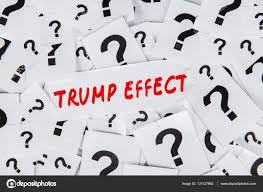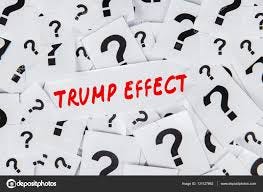Trump's Tariffs: Clarity is Key
How a Messaging Crisis Is Undermining Economic Policy and Investor Confidence
Trump’s Tariffs. The way things look right now, those two words will be defining Trump’s legacy in the history books. Whether they represent his greatest triumph or his most consequential misstep depends entirely on how they play out. But right now, what is preventing these tariffs from possibly being a positive legacy isn’t just their economic impact—it’s his administration’s utter failure to articulate a clear and unified goal for them.
The confusion surrounding these tariffs has left investors, businesses, and foreign governments scrambling to interpret their purpose. Are they Option 1, which is retaliatory measures designed to force negotiations and lower global trade barriers? Or are they Option 2, which is intended to permanently reshape America’s role in the global economy by bringing manufacturing jobs back home? The administration’s mixed signals suggest that even Trump’s team isn’t sure which path they’re pursuing—and that uncertainty is the chief cause of the economic turmoil we are witnessing.
THE MESSAGING PROBLEM IS AMPLIFYING ECONOMIC UNCERTAINTY
One of the biggest challenges with Trump’s tariffs isn’t just their economic impact—it’s the lack of clarity about their ultimate goal. Without a clear goal, uncertainty governs investors, businesses, and foreign leaders.
Leading up to April 2—what Trump called “Liberation Day”—the messaging seemed focused on retaliatory tariffs aimed at securing concessions from trading partners like Mexico and Canada, a strategy that had worked in Trump’s first term. Cabinet members repeatedly described these “Liberation Day” tariffs as temporary measures designed to spur negotations.
Then came the action. Israel announced it would lower its tariffs on US goods to 0%, seemingly aligning with Trump’s goal of reciprocity. But Trump responded by imposing a 17% tariff on Israeli goods—a move that contradicted his earlier rhetoric. Now, Trump is signaling that the tariffs are permanent fixtures of his economic policy, stating that the tariffs “are here to stay.”
The lack of consistency in messaging has created chaos for everyone involved. Investors are unsure whether to expect long-term negotiations or long-term market disruptions, leading to massive sell-offs. Businesses don’t know whether to invest in reshoring production to America, wait for Trump to negotiate these tariffs down, or simply wait until we have a new President. Foreign governments don’t know whether to negotiate or retaliate, leading to a multitude of different responses that are further destabilizing global trade.
THE TWO OPTIONS—AND WHY ONE IS CLEARLY BETTER
At its core, the messaging crisis stems from two competing visions for what these tariffs are supposed to accomplish:
Option 1: Retaliatory Tariffs Leading to Negotiation
Under this approach, tariffs would match or exceed those imposed by other countries to pressure them into negotiations that would lead to mutual tariff reductions. This tactic has precedent: Trump successfully renegotiated trade terms with Canada and Mexico during his first term by leveraging tariffs as a bargaining tool.
Positives: American consumers will have lower costs. The stock market will recover, and investor confidence will return. U.S. Companies would have improved trade terms for exports.
Negatives- Limited incentive for companies to reshore their manufacturing, meaning jobs won’t return. Companies may continue to outsource their factories to other countries where labor costs are cheaper.
Option 2: Permanent Restructuring of America’s Economy
This vision incentivizes domestic manufacturing by imposing sustained import tariffs, regardless of other countries’ responses. While this could bring some jobs back to America, it would also lead to higher consumer prices due to increased labor costs or tariff-related expenses passed down by businesses.
- Positives- More manufacturing jobs would come back to America.
- Negatives- Higher prices for all Americans. Reduced economic growth as consumers spend less due to inflation. Long-term stagnation occurs as businesses delay investments due to uncertainty about future policies.
WHY MESSAGING MATTERS—EVEN IF OPTION 2 IS A BAD IDEA
Here’s where things get tricky: Even if Trump were to unify his administration around Option 2—a long-term restructuring of America’s economy—it would be a bad policy choice with bleak economic consequences. Prices would soar, consumers would buy less, and growth would stagnate as businesses delayed investments—waiting out Trump’s presidency rather than commit to reshoring manufacturing factories.
But here’s the thing: The current messaging crisis makes everything worse—regardless of which option Trump chooses.
If Trump were clear about pursuing Option 1, markets could stabilize as investors anticipated eventual tariff reductions and resumed consumer confidence. If he were clear about pursuing Option 2, businesses could at least make informed decisions about investing in reshoring production or adjusting their supply chains.
Right now, however, nobody knows what the administration is doing—not investors, not businesses, not foreign governments—and that uncertainty is amplifying every negative consequence of these tariffs.
CLARITY IS KEY—EVEN IF IT MEANS OWNING A BAD POLICY
Trump’s tariffs have significant flaws—but their biggest flaw right now isn’t even economic; it’s strategic. Without clear messaging from the administration about what these tariffs are trying to achieve, markets will continue reacting negatively, businesses will remain paralyzed by indecision, and foreign governments will struggle to respond constructively.
If Trump truly believes in Option 2, which he has signaled, he needs to own it and communicate it clearly so everyone can plan accordingly. If he believes in Option 1, he must act quickly on offers like the EU’s proposal for mutual reductions before more damage is done.
Either way, clarity matters more than anything else right now—and until Trump provides it, his tariff policy will remain defined not by its goals but by its chaos.




